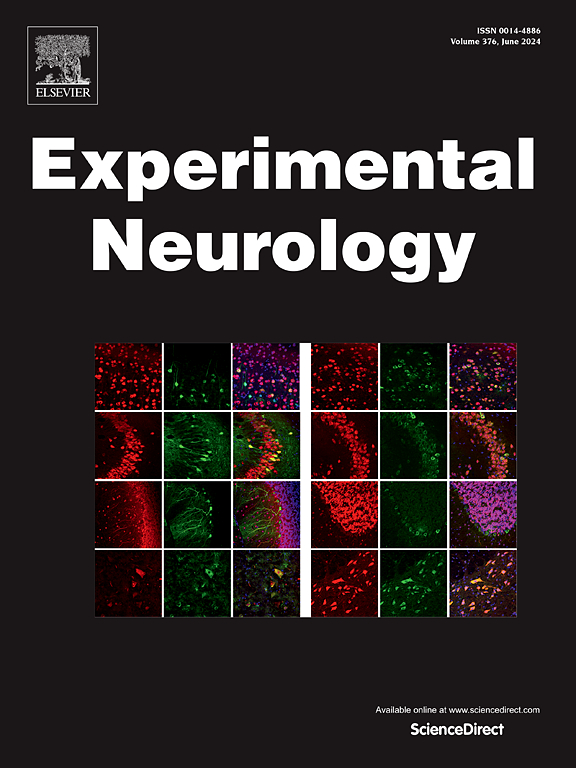转录因子AP-2 β是重复经脊髓磁刺激治疗脊髓损伤的潜在靶点,可减轻炎症,减轻脊髓损伤。
IF 4.6
2区 医学
Q1 NEUROSCIENCES
引用次数: 0
摘要
脊髓损伤是一种神经退行性疾病,致残率高。根据mRNA-seq结果,转录因子AP-2 β (TFAP2B)是重复经脊髓磁刺激(rTSMS)治疗脊髓损伤的潜在靶点。我们的研究结果表明,rTSMS可显著改善脊髓损伤后的运动功能并促进神经元存活。结果显示,TFAP2B在脊髓损伤后下调,而在rTSMS治疗后显著上调,提示其在神经元修复中起关键作用。过表达TFAP2B可提高脊髓损伤大鼠BBB评分和运动能力,减少细胞凋亡。此外,过表达TFAP2B可降低脊髓中Iba1和GFAP的表达,过表达TFAP2B后脊髓中PDGFrβ的表达也降低。TFAP2B基因敲低可逆转rTSMS治疗脊髓损伤的效果。我们发现rTSMS可减轻脊髓损伤所致的骨质疏松症,导致BMD、BV/TV和tbh升高。rTSMS处理降低了RANKL/OPG比值。综上所述,我们的研究表明TFAP2B是rTSMS治疗脊髓损伤的下游靶点,TFAP2B的过表达增强了rTSMS的治疗效果。本文章由计算机程序翻译,如有差异,请以英文原文为准。
Transcription factor AP-2 Beta, a potential target of repetitive Transspinal magnetic stimulation in spinal cord injury treatment, reduced inflammation and alleviated spinal cord injury
Spinal cord injury (SCI) is a neurodegenerative disease, with a high disability rate. According to the results of mRNA-seq, transcription factor AP-2 Beta (TFAP2B) is a potential target of repetitive Transspinal Magnetic Stimulation (rTSMS) in SCI treatment. Our results demonstrated that rTSMS significantly improved motor function and promoted neuronal survival post-SCI. The result showed that TFAP2B was downregulated following SCI, while significant upregulation after rTSMS treatment, suggesting its pivotal role in neuronal repair. Overexpression of TFAP2B improved Basso Beattie and Bresnahan (BBB) score and athletic ability, and decreased cell apoptosis in SCI rats. Additionally, overexpression of TFAP2B reduced the expression of Iba1 and GFAP in spinal cord, and the expression of PDGFrβ was also reduced in SCI rats after TFAP2B overexpression. Knockdown of TFAP2B reverses the effect of rTSMS treatment in SCI. We found that rTSMS alleviate osteoporosis caused by SCI, resulting in increased BMD, BV/TV, and Tb.Th. rTSMS treatment lowered the RANKL/OPG ratio. In all, our study illustrated TFAP2B is a downstream target of rTSMS for the treatment of SCI, and overexpression of TFAP2B enhanced the therapeutic effect of rTSMS.
求助全文
通过发布文献求助,成功后即可免费获取论文全文。
去求助
来源期刊

Experimental Neurology
医学-神经科学
CiteScore
10.10
自引率
3.80%
发文量
258
审稿时长
42 days
期刊介绍:
Experimental Neurology, a Journal of Neuroscience Research, publishes original research in neuroscience with a particular emphasis on novel findings in neural development, regeneration, plasticity and transplantation. The journal has focused on research concerning basic mechanisms underlying neurological disorders.
 求助内容:
求助内容: 应助结果提醒方式:
应助结果提醒方式:


